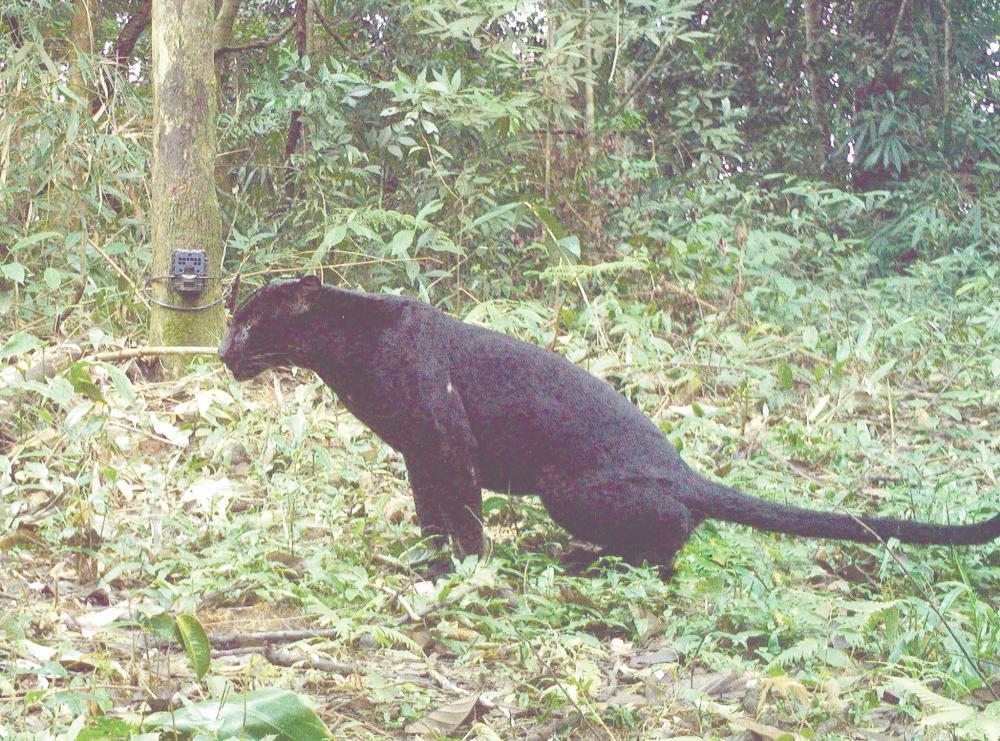PETALING JAYA: While deforestation and habitat loss remain pressing concerns in the country, wildlife experts warn that poaching, targeted hunting and indiscriminate snaring of wildlife also pose a serious threat to animals, especially the Malayan black panther, whose numbers have fallen to fewer than 300 in the peninsula.
The Malaysian branch of US-headquartered Panthera, an organisation dedicated to the conservation of the world’s 40 species of wild cats and the ecosystems they inhabit, said Malaysia is recognised as having the world’s largest population of black panthers, also known as Indochinese leopards.
Panthera Leopard Conservation Scientist for Southeast Asia Dr Susana Rostro Garcia said: “The panthers are predominantly found in dense rainforests. So, expanding protected areas and establishing wildlife corridors are important to ensure their survival.
“Such strategies have the potential to interconnect subpopulations, reduce the risks associated with small, isolated populations, increase their numbers and facilitate recolonisation in areas where they have been extirpated.”
She said for such efforts to be effective, expanded areas must include strong wildlife protection measures to prevent poaching, habitat degradation and other threats.
She also said in 2018, the International Union for Conservation of Nature estimated that fewer than 300 Indochinese leopards remained in Malaysia, although the exact figure is unavailable.
She added that stricter enforcement could mitigate some of the current threats but enforcement alone is unlikely to be sufficient to guarantee the survival of the panthers.
“Increased poaching by those in the illegal wildlife trade, particularly intensive and indiscriminate snaring, is likely to represent the most pressing threat to panthers in the country apart from habitat loss, which facilitates poaching and causes prey declines, and human-wildlife conflict.”
Garcia called for site-specific security strategies to better understand and address localised threats to panthers and ensure effective management of protected areas.
She highlighted the importance of rallying Malaysians to support the conservation of panthers as many are unaware of their endangered status.
“Awareness could be achieved through local campaigns, community outreach programmes, publications by news agencies and targeted advertisements.
“One way individuals could help is by avoiding the consumption of wildlife meat and products, including wild pigs and deer, as demand for them drives poaching and reduces food sources for panthers, potentially escalating human-wildlife conflict.”
Universiti Putra Malaysia Wildlife Management senior lecturer Dr Tengku Rinalfi Putra Tengku Azizan said as one of Malaysia’s apex predators, black panthers play a crucial role in maintaining the balance of the rainforest ecosystem.
He said their presence helps regulate prey populations, preventing overpopulation that could lead to habitat degradation.
“Without panthers, unchecked prey numbers may result in increased competition for food and weakening animal populations, which make them more susceptible to disease.
“This could trigger a ripple effect, heightening the risk of disease transmission across wildlife and even humans, leading to severe ecological consequences.”
He said several key protected areas in Malaysia serve as strongholds for black panther populations, including the National Park, Royal Belum State Park and the Endau-Rompin National Park.
He also said deforestation disrupts the hunting and breeding patterns of black panthers by fragmenting their habitat and altering the stability of their ecosystem.
“As forests are cleared, prey populations decline, forcing black panthers to expand their hunting range or compete with other predators.
“This increases the risk of human-wildlife conflict as they may hunt livestock or enter settlements for food.”
He stressed that Malaysia’s conservation efforts for black panthers remain limited due to a lack of data on their population and behaviour as they often avoid areas with larger predators, making research and conservation planning a challenge.









